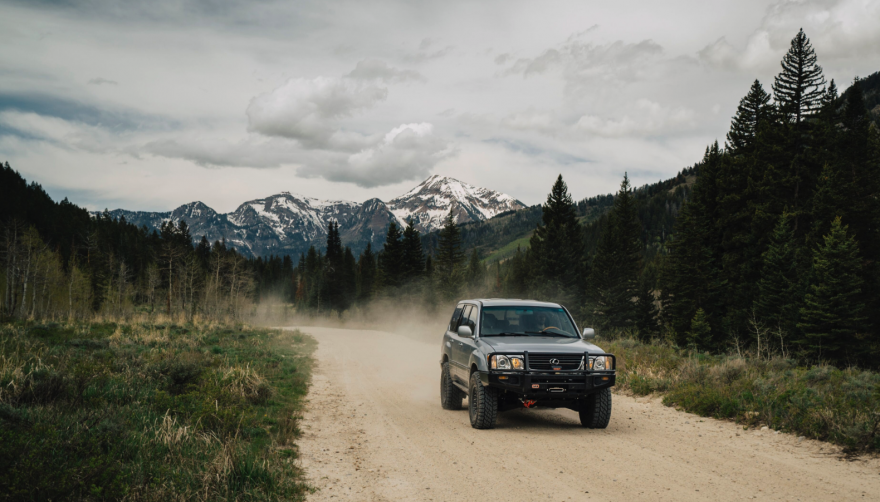
I always look forward to taking a few days off, meeting up with some friends, and putting down some miles on dirt – but it’s not always easy to get schedules aligned. When I work on the weekend and have a few days free mid-week, or a last minute 4×4 urge hits me on a Friday night, I often find myself heading out to enjoy the outdoors alone. Here’s a few items I’ve found useful over the years. This will cover most of the essentials, and I’ll go into more detail on each in future posts.
Most, if not all, of this gear is important to have on any kind of overland or off-road trip – but when you’re out alone without the safety net of extra vehicles and friends, it’s critical to be prepared.
1. Maxtrax
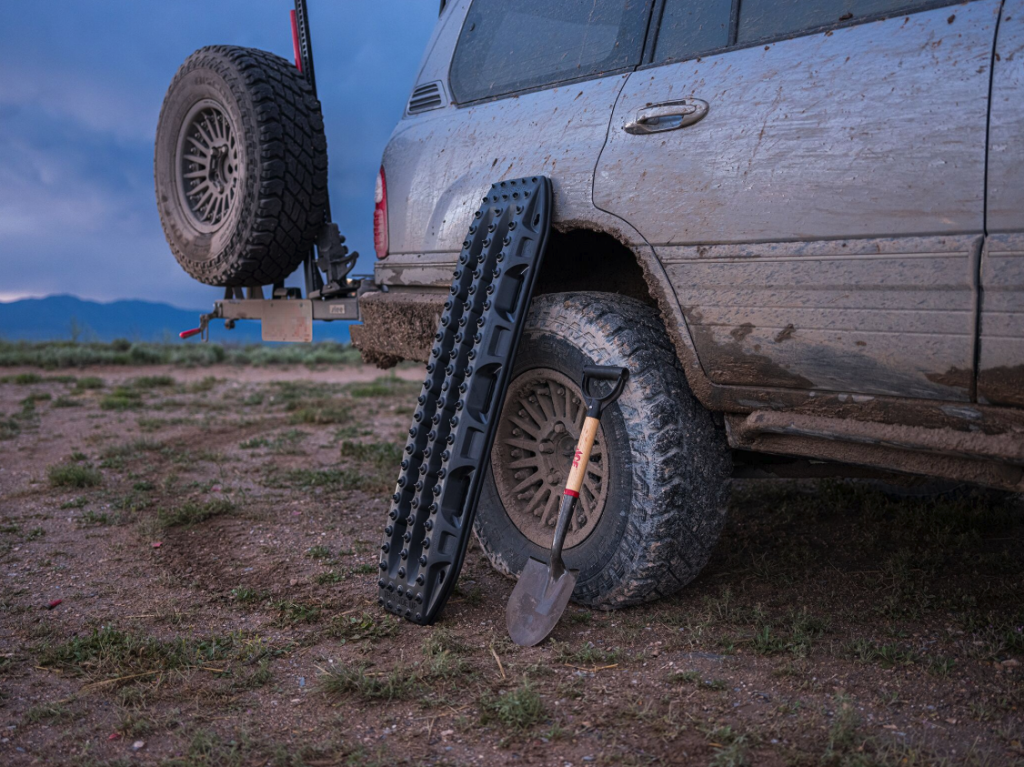
These are great self-recovery tools. Doubling as a shovel and traction device, they’re perfect for environments like sand dunes, snow or desert where you can’t find a tree to winch off. You can shove them under your tires to create a grippy surface, and you drive out. You might notice these haven’t been used yet – I just picked up a brand new set. There are cheaper options out there that might work for you – after all, it is just a plastic board – but I’ve had great experience with these in the past. Maxtrax comes from Australia, where they’ve designed and tested a really great piece of equipment that stands up to the harshest conditions.
2. Hilift Jack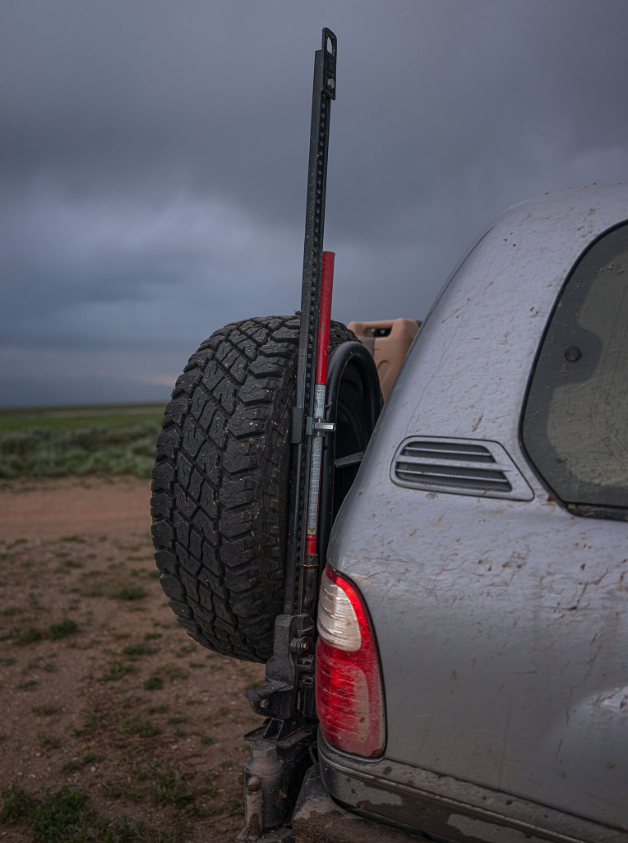
I keep a Hilift, or farm jack, mounted on my rear bumper when I’m out on trails. A great all- purpose tool, it can be used as an off road jack, or a handheld winch. The catch with a Hilift is that you need solid points on your vehicle to use it. These can be steel offroad bumpers or sliders – you don’t want to be jacking up your truck using your rocker panels. There are also accessories you can get for your Hilift to attach to a wheel, so you can jack up a wheel and add dirt, rocks or branches underneath to get traction. I remove the jack when I get home and keep it off the truck to avoid corrosion.
3. Emergency Locator Beacon
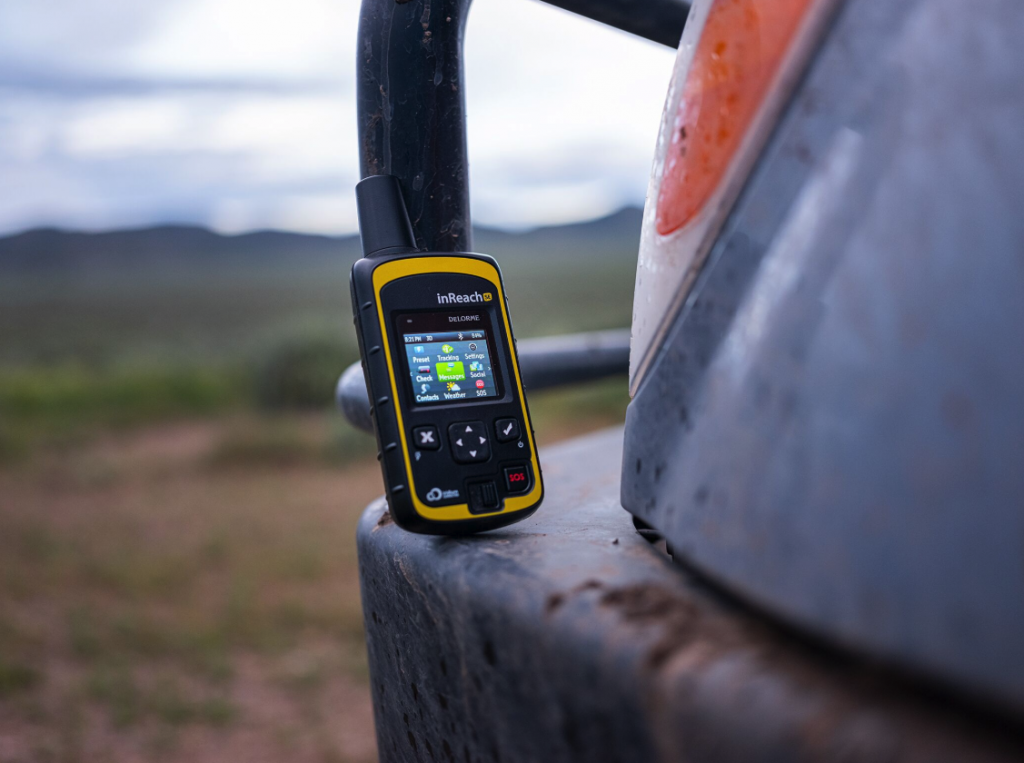
I take a Delorme InReach with me anytime I leave civilization, whether for hiking or wheeling. The SOS function allows me to contact emergency services anywhere. I’ve come across a couple accidents on the trails – both rolled ATVs. One rider was hurt badly enough that we had to send someone to call for life flight, which meant driving 30 minutes back down the trail to find cell service. With this device, I can call for help right then and there. Beyond that, the InReach provides a messaging service, which my wife appreciates when I’m gone for days without cell service. It also pairs with my phone and gives me GPS data and tracking, which is huge if you ever get lost. One downside is that the InReach relies on satellite communication, so if you’re in a super cloudy or stormy area, it may take a while for tracking and messages to get through.
4. Maps
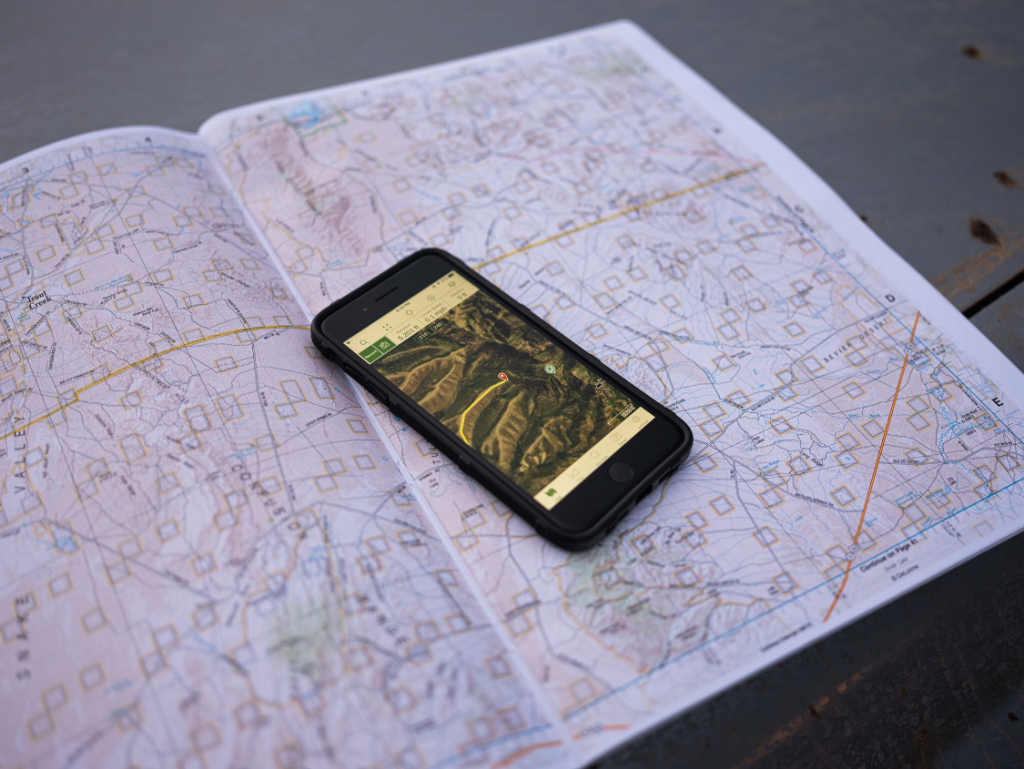
I often find myself adopting a “one is none, and two is one” mentality when heading out on the trails. For navigation, it’s no different – you need to know the area you’ll be exploring, and have a backup plan in case you get lost. For me, I have GPS on my InReach, as well as maps I download to my phone. I use Gaia GPS, which is a great way to setup routes as well. In addition to this, I take paper maps and a compass – especially if I’m hiking in unknown territory with no trails.
5. Guns
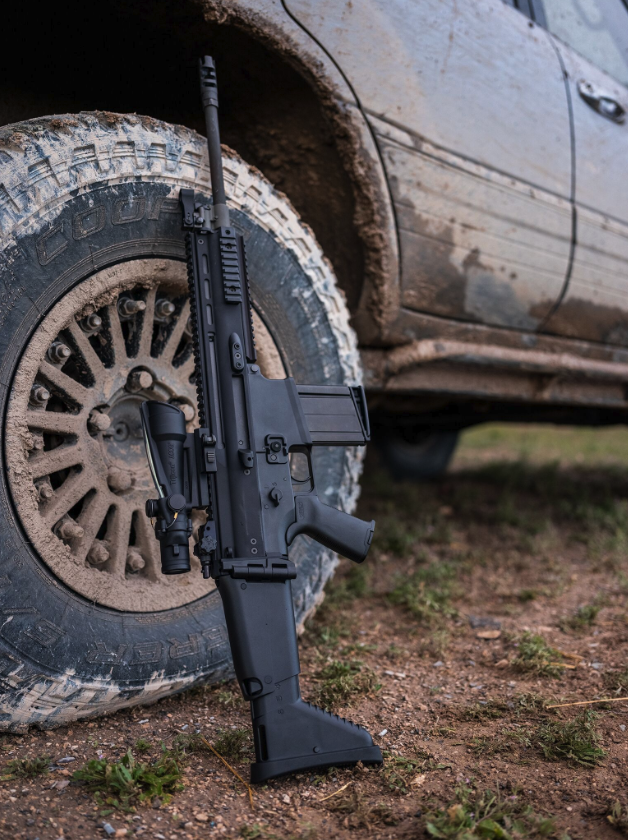
Ok, so I’m not dragging a SCAR around with me everywhere, of course, but I was going to do some low-key target shooting on this trip. I normally look at the destination and plan for any potential dangers, which usually boils down to bears, moose, mountain lions, or other people, and carry accordingly. A Smith & Wesson .44 Mag usually does it for me, and is easy enough to hike with. If I was in grizzly country further north, the .44 Mag with the right ammo should be alright, but I’d keep a shotgun with slugs around camp just to be safe.
6. Full Size Spare
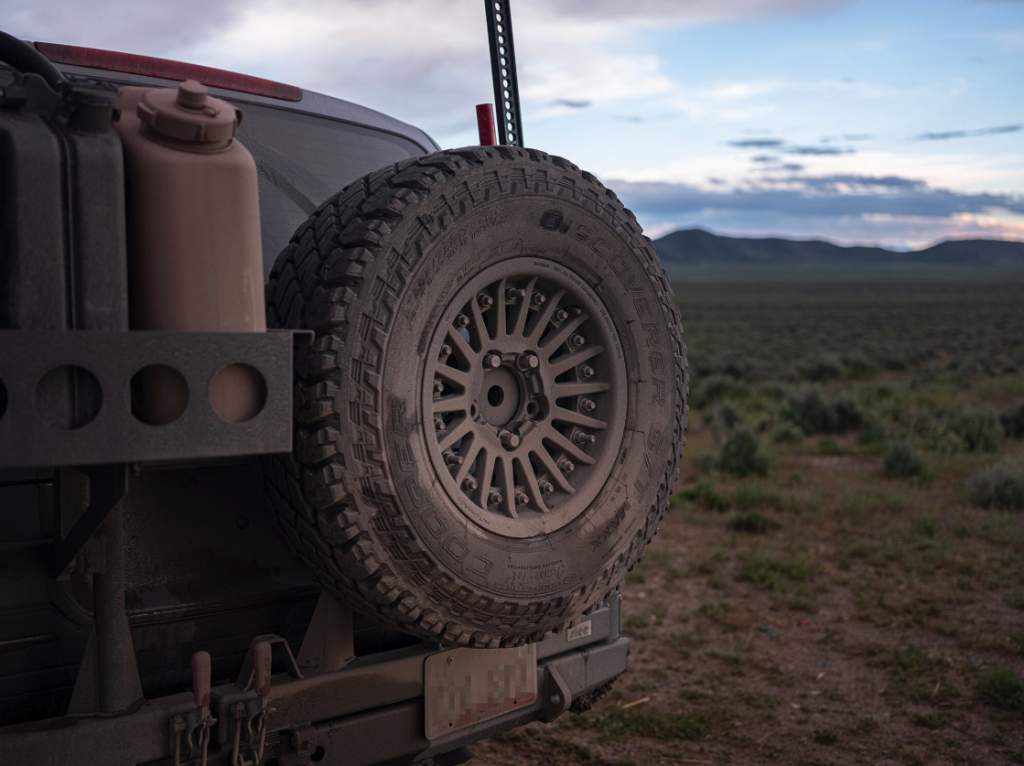
Tires face all sorts of hazards off-road – sharp rocks, branches, railroad spikes, you name it. You don’t want to be one of those people who blows a tire 40 miles from the nearest road, and realizes you bought some nice 35” tires but your spare is still 31”. Sure, you can limp home, but that’s the end of your trip. In addition to slashed or deflated tires, if you lose the bead while on a trail it’s often a lot easier to just throw on the spare and get the bead reseated at home.
7. Winch and Recovery Gear
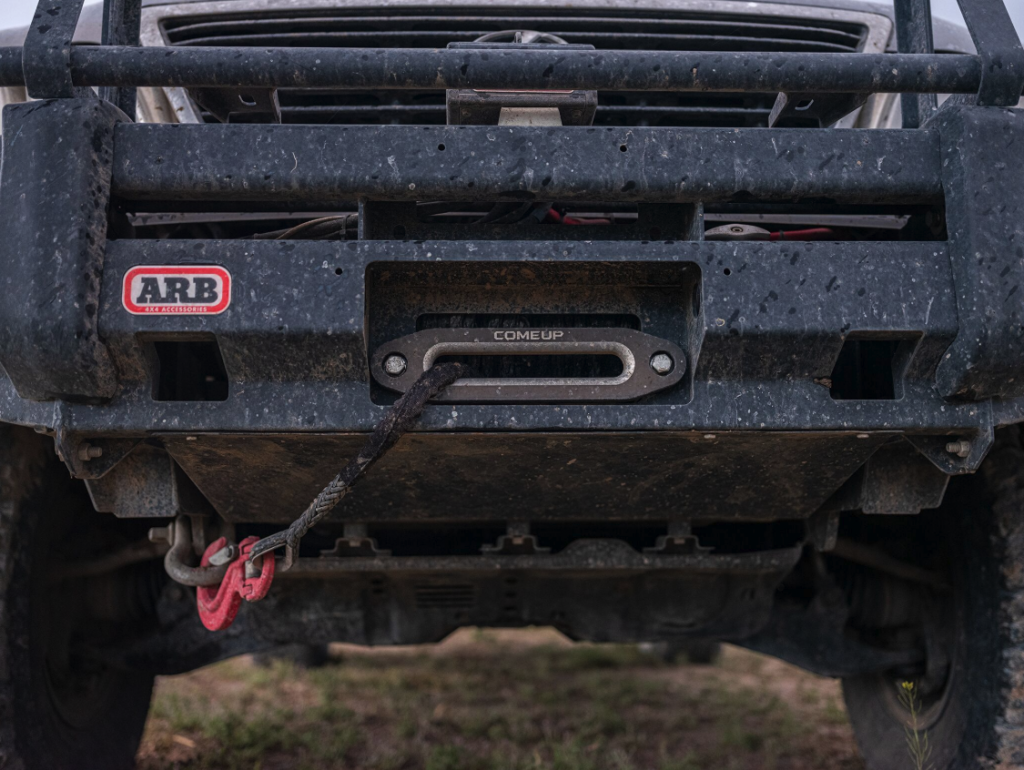
Whether alone or off roading with others, winches are a great tool to have. The downside is that you need a way to mount it on your truck, with a hidden winch mount or an off-road bumper – but once you have it, it’s an easy way to get yourself unstuck. Assuming you have trees to winch off of. I use a Comeup SEAL 12.5rs, which is rated for 12,500 lbs. It’s always better to have a winch with a higher weight rating than your vehicle.
8. Extra Gas
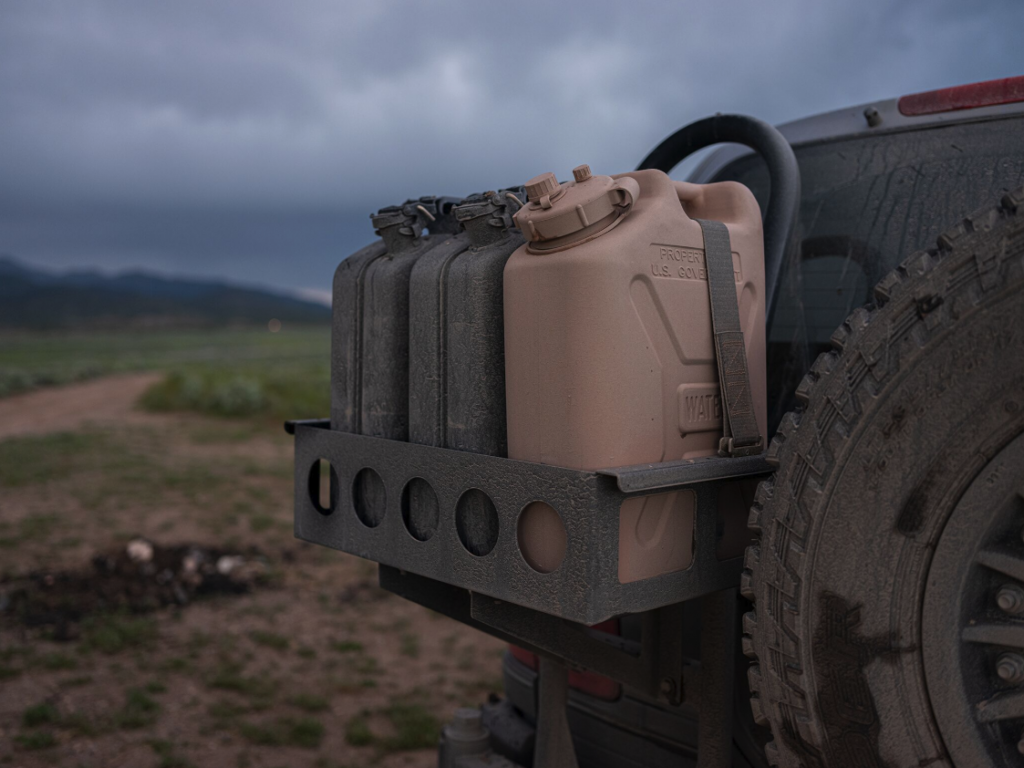
When traveling through the deserts of Utah and Nevada, I often find myself one or two hundred miles away from the closest gas station. In most cases I can carefully calculate my range and make it on one tank of gas, but it’s always good to have peace of mind. I carry 10 extra gallons in two 5 gallon jerry cans, as well as 5 gallons of water. It’s nice to know that if you see an unexplored trail, you have the freedom to check it out without worrying about running out of gas. It’s also a must-have for winter emergencies – if you get stuck in your car and have to wait it out for a few days, you’re going to want to run the heater.
9. Common Sense
You have to have the common sense and skills necessary to stay safe outdoors. Depending on where you go, it could be days or even weeks before someone else travels the same trail. Here in Utah, we see news stories all the time about unprepared people getting stuck deep on a desert road and almost dying – when, with just a little preparation, they could have driven out. For me, I have to make a conscious decision to not take big risks – I’ve had to turn back on plenty of muddy water crossings or snowy mountain trails because I knew I’d be in over my head alone.
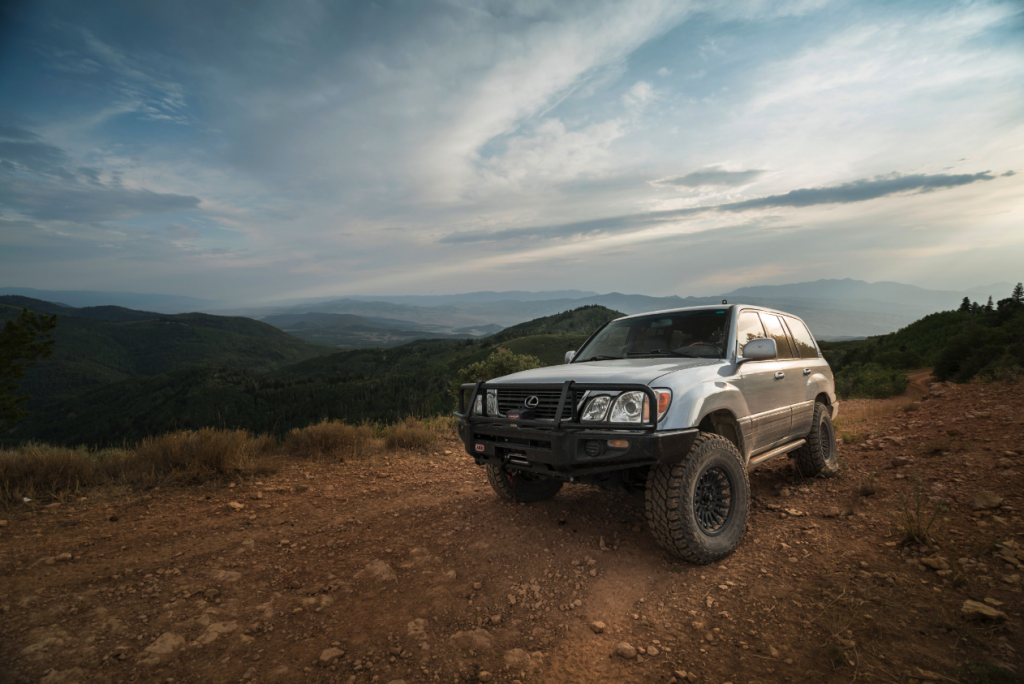
 Your Privacy Choices
Your Privacy Choices